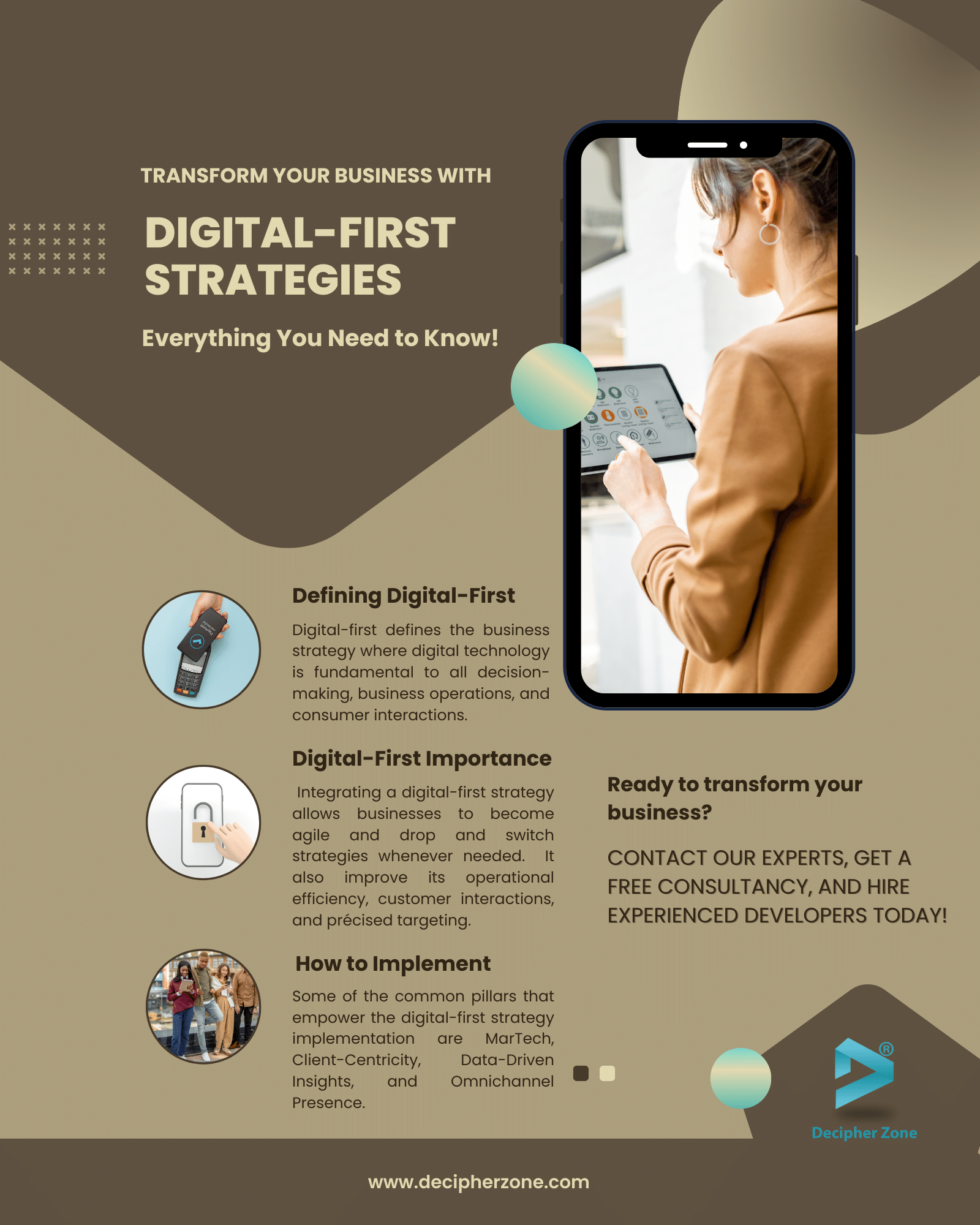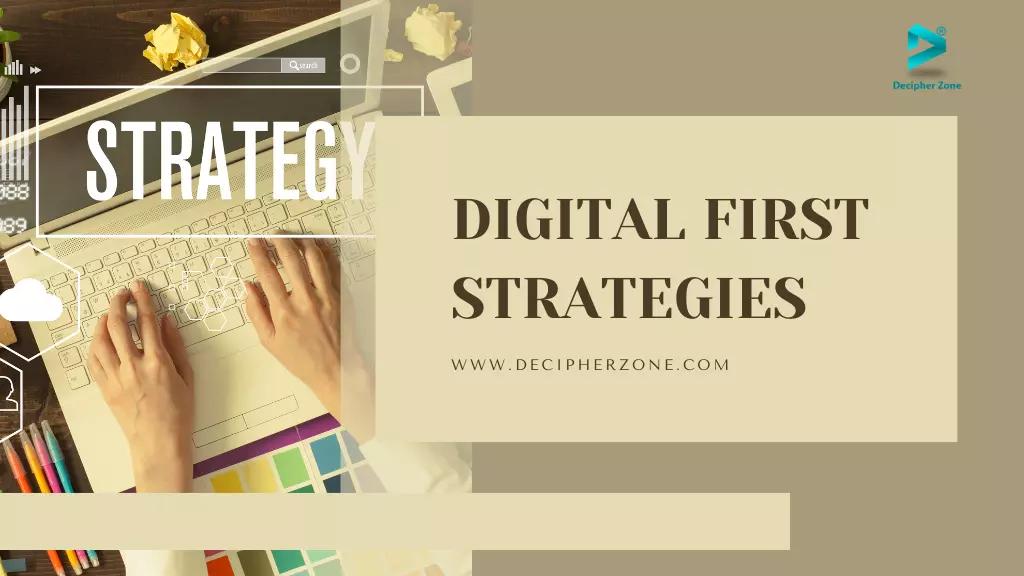Digital-first strategies can help transform your business while gaining more customers than using traditional methods. How? Read the blog to find out.
With the continuously evolving digital landscape, traditional business methods don’t work as they used to. The digital environment is rapidly making its space in both the personal and professional world, thanks to the increase in smartphone usage.
Therefore, it has become essential for businesses to adopt digital-first strategies if they want to succeed.
This is particularly relevant on platforms like Instagram, where establishing a strong online presence is key. Brands can benefit from getting some Instagram likes, as it boosts visibility and credibility, making them more appealing to potential customers.
Even the C-level executives in a board meeting no longer see technology as a mere means to achieve what has already been decided. The discussion has shifted to how technology can help create and expand strategic options.
In this blog, we will explore everything about digital-first strategies to help you integrate digital-first strategies into your business.
What is Digital-First?
Digital-first defines the business strategy where digital technology is fundamental to all decision-making, business operations, and consumer interactions. In simple terms, digital-first is the way of addressing new challenges with solutions that are as digital as possible.
In this approach, businesses recognize that the digital landscape and buyer’s expectations are constantly changing, therefore they should come up with solutions that are innovative and align with the ever-changing demands in the market.
The digital-first approach can transform and expand the business horizon in multiple ways to help them grow and retain existing customers while attracting new ones. It goes beyond just adopting new tools, it helps businesses reimagine how an organization communicates, interacts, and delivers value to its customers.
Importance of Digital-First Strategy
As companies continue to innovate and become more flexible so that they can rapidly adapt to changes in demand. Integrating a digital-first strategy allows businesses to become agile and drop and switch strategies whenever needed. This is just one example, below we have enlisted a few more benefits that come with a digital-first mindset, backing its importance.
Operational Efficiency
Using digital tools and technology in business can help automate tedious manual processes and increase efficiency, freeing up a lot of resources that can be allocated to other cognitive tasks such as expanding into the market and developing new products.
Improved Customer Interaction
Digitalization can help businesses build closer relationships with customers through personalized emails and in-app recommendations by analyzing their search history, purchases, and preferences.
Precise Targeting
With digital-first strategies, businesses don’t have to spend time and money on offline marketing, instead they precisely target their audience through digital marketing based on interests, demographics, behaviors, etc. It also allows businesses to reach targeted audiences with the right message at the right time, increasing the conversion chances.
Read: Mastering Email Marketing
How to Implement Digital-First Strategies?
Suddenly announcing that the organization will undergo digital transformation by implementing digital strategies will not get the job done. Rather, it will create chaos among the employees as they might have no clue how digitization will impact their current job roles.
Usually, an employee doesn’t see their work practices as outdated or inefficient, which means just dropping an email stating “Introducing Digital Work Approach” will not work. Instead, as an employer you will have to help them get comfortable with the idea of the digital-first method and how it is going to change their role positively by educating employees about its potential.
Some of the common pillars that empower the digital-first strategy implementation are as follows:
Marketing Technology
To deliver a real-time yet personalized experience to the customer, the business will have to form the digital-first infrastructure for all digital touchpoints. Marketing technology (MarTech) will offer tools to collect and analyze customer data, execute targeted campaigns, and automate different marketing processes.
Some of the tools and platforms that can be used for MarTech are marketing automation software, customer relationship management (CRM) software, social media management platform, and email marketing tools.
Client-Centricity
Businesses can create a client-centric experience for their customers by defining and redefining the buyer’s persona, creating buyer journey mapping, and personalizing their experience through AI and automation.
Data-Driven Insights
Without utilizing data, the digital-first method might not work as expected. Therefore, businesses should ensure reliable data collection and analytics to get valuable insights on customer preferences and behavior that help in enhancing marketing campaigns and driving better results.
Strong Omnichannel Presence
Businesses also require a strong omnichannel presence to maintain a unified presence for the customers, regardless of how they’re getting in touch with your brand.

Digital-First Strategies Will Reach its Peak
With businesses adopting digital business models, the tech industry is bound to reach its peak. Soon, the digital will no longer remain something for early adopters as it will move to the late majority, changing what you sell, how you demonstrate its value, and interact with customers.
Now the question is which technologies or digital initiatives will be the foundational elements? To answer this question, we have enlisted the tech we consider will be the key technologies to improve the digital-first approach.
Cloud Computing
One of the digital-first driving forces is cloud computing. Adapting cloud computing allows organizations to optimize their digital operations through scalable, accessible, and flexible infrastructures. Developing a cloud-based software solution, allows businesses to improve efficiency, team collaboration, agility, and cost-efficiency.
Automation
Integrating business process management (BPM) and Robotic Process Automation (RPM) allows organizations to automate monotonous processes, optimize workflows, minimize collaboration, and seamless task orchestration. In short, process automation will allow businesses to improve operational efficiency, leading to better competitive edges.
Artificial Intelligence & Machine Learning
With continuous advancement in AI and ML technologies, they have become game-changing strategies for businesses. Reasons why they are key to improving digital transformation for a business are their ability to not only automate the business process but also personalize the customer experience and drive immeasurable insights through vast data sets.
Read: Proven Strategies to Automate Marketing
Wrapping it Up
In conclusion, it won’t be surprising to say that only the businesses that understand the importance of digital-first strategies and their adoption will thrive in the industry. In simple terms, digital-first strategies are here to stay, and if you want to expand your business in today’s competitive world then consider investing in the digital transformation journey.
And to make that happen, you will need a web app or mobile app for your business along with omnipresence on different digital platforms that helps in target marketing.
To hire web app/mobile app developers, all you have to do is contact our experts, acquire a free consultancy, and hire experienced developers from us after conducting their interviews to ensure their experience aligns with your requirements.

